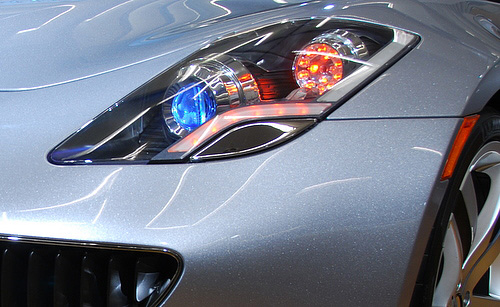
By Evan Ackerman
Your hybrid is great and all (never mind that it’s arguably more wasteful of resources than my old Volvo), but it’s no longer cool enough to just have a hybrid. Everybody is producing hybrids now, and they’re just not making enough progress where progress needs to be made. There are a few companies, though, who are actually stepping up and taking a risk on vehicles that don’t use gas engines as their primary means of propulsion. Check them out, after the jump.
Mitsubishi PX-MiEV Concept
This is what Mitsubishi calls a “plug-in hybrid crossover,” which seems a little bit redundant to me. There are electric motors to power both the front and rear wheels, and a gas engine can add power to the front wheels or power a generator. These systems can be combined in a bunch of ways, and the vehicle does so on its own depending on how reckless of a driver you are (among other factors).
Also, here’s a pretty cool feature: “In addition, to maximize effective use of the drive battery, the vehicle is equipped with a power supply mode that allows the use of some battery power to supply domestic appliances or as an emergency power source in the event of a natural disaster.” Basically, what they’re suggesting you do is plug the PX-MiEV into your house, charge it up with cheap electricity in the middle of the night, and then use its batteries to power your toaster during the day when energy costs peak.
But wait, there’s more! The interior includes “a negative-ion aroma humidifier and oxygen enricher that improve comfort and reduce fatigue,” and if the car thinks you’re starting to fall asleep, it “emits a distinctive fragrance” to alert you to the situation. There aren’t any specifics as to what this fragrance IS, so let your imagination run wild. Or don’t.
Chevy Volt
We’ve been covering the Volt for several years now (and covering and covering) but here’s the gist: it plugs in to the wall, goes 40 miles on batteries, and then uses its gas engine to make it an extra 300+ miles. The latest news (sort of news) is that the Volt is going to go on sale in California late next year for probably around $40k. Seeing is believing, but I will say that the Volt at the show looked more than a little used, which is a good sign… I guess somebody is actually getting to drive one of these.
Mini E
This little guy is unchanged from last year, and field trials are underway in select cities. Unfortunately, it hasn’t been going that well. A 4 hour charge gets you a usable range of about 100 miles, but the back seat (and part of the trunk) is entirely taken up by a gigantic battery pack.
Mercedes-Benz F-Cell
Ah, here we go. F-Cell means (you guessed it) fuel cell, and the F-Cell has one. Compressed hydrogen reacts with ambient oxygen to create electricity and pure water, which is a pretty lucrative source of power for people who are both eco-minded and thirsty. The rest of F-Cell is based on the Mercedes B-Class, a small and efficient model that’s popular everywhere in the world except for North America.
The big problem with this car? My local gas station doesn’t refill hydrogen, and neither does anybody else. Mercedes is going to bring 200 production F-Cell cars to the US anyway, for a lease-test program next year.
Honda FCX Clarity
Also a hydrogen fuel cell vehicle, the FCX Clarity captured our attention last year thanks to the innovative way that Honda tackled the refueling problem: each FCX Clarity comes with a Home Energy Station that sucks hydrogen out of your natural gas line and feeds it to your car while creating heat and electricity at the same time. About 200 of these cars have been produced and are available for lease, sort of… They go for $600 a month, but you won’t get one because you’re not special.
Toyota Prius Plug-In Hybrid
This is Toyota’s tentative first step towards an hybrid vehicle with an option to go pure electric, which is weird, considering the experience that they have with the Prius. Their plug-in version offers relatively uninspiring specs, too… The number you care about, which is maximum mileage on electricity alone, is a mere 13 miles using their first generation lithium-ion battery pack (current Priuses use nickel-metal hydride batts). You’ll get those 13 miles after a 3 hour charge on a regular (i.e. 110 volt) outlet.
Toyota plans to produce 500 Prius Plug-In Hybrids in 2010, 150 of which will end up with customers in the US for testing. But again, it won’t be you.
Fisker Karma
Without an appearance by Tesla (and probably even if there had been), the Fisker Karma was both the eco-friendly car that I’d most like to drive, and one of the few that is actually going to be available to be owned by normal (rich) people in the near future. The Karma has an extended range electric powertrain, which means that you can drive it on batteries for 50 miles or so, and after that, a small and efficient gas engine kicks in to keep you going for another 250 miles. With 400 hp and a top speed of 125 mph (which I imagine is electronically limited), it clocks a 0-60 time of just over 7 seconds on batteries only, and knocks that down to 5.8 with the assistance of the little engine.
This car is the same production version that we saw a year ago (complete with the solar panel roof), but shockingly (shockingly!), the price has gone up: excluding any potential tax credits, the EcoStandard model will run you $87,900 with the EcoSport convertible bumping that up to $94,900 with a leather interior and premium sound system. An extra $11,500 gets you an interior made with no animal products and wood trim that’s been made out of logs harvested from the bottom of lakes. Kinda makes me wonder what you get if you don’t pay for that upgrade… Probably rainforest hardwood and Northern Hairy-nosed Wombat skin seats or something.
Fisker says that “our goal is to make eco-friendly cars without compromise either in performance or design.” It looks like they’re about to pull it off, too, and the first Karmas should be showing up in driveways by the end of next year.
The LA Auto Show is open to the public from December 4th to the 13th.
[ LA Auto Show ]

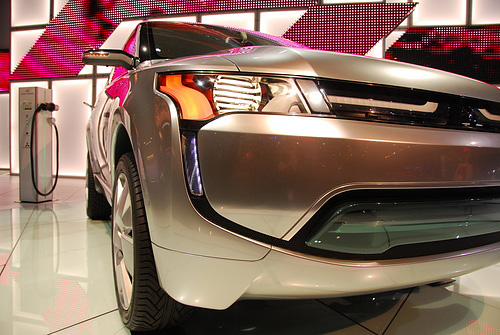
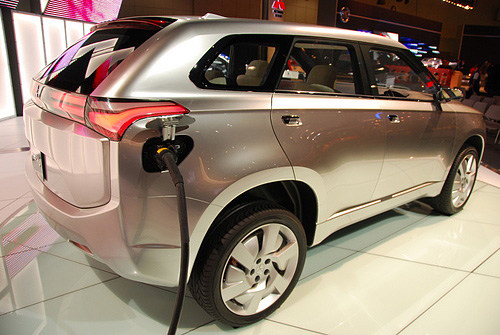
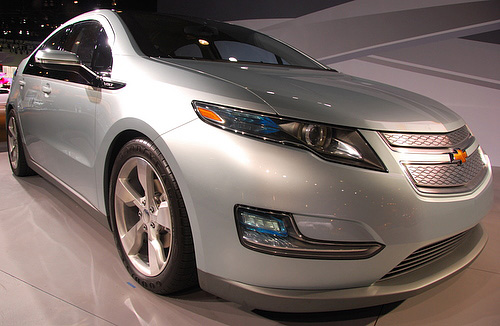
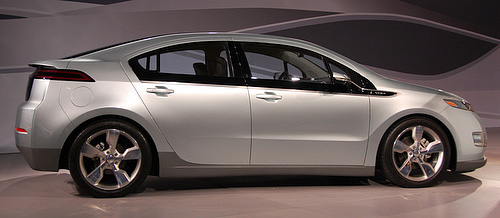
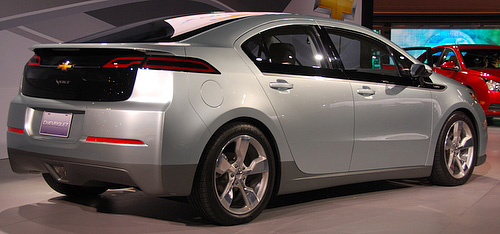
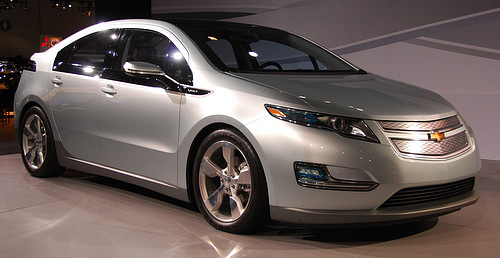
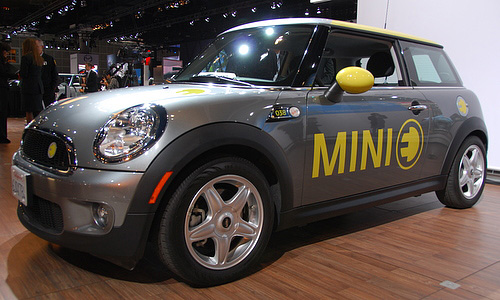
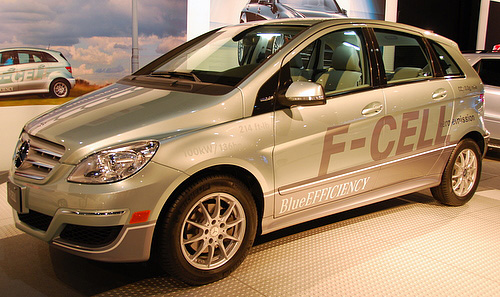
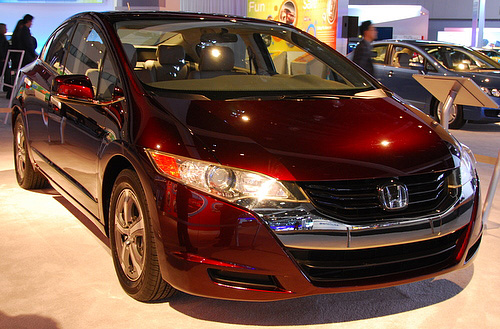
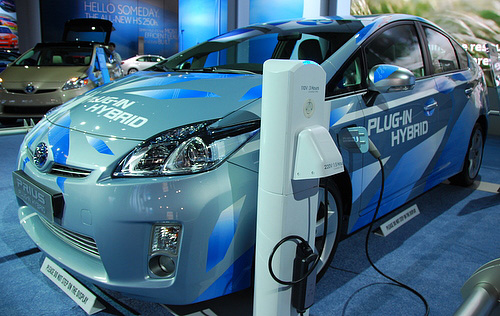
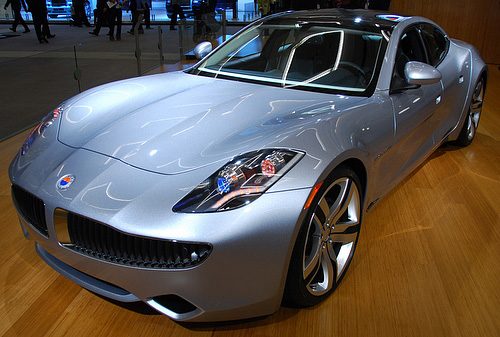
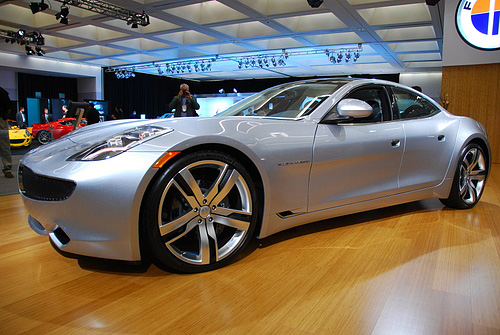
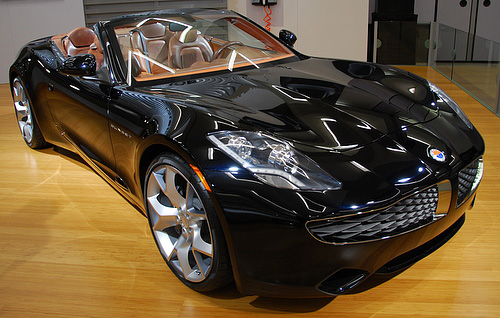
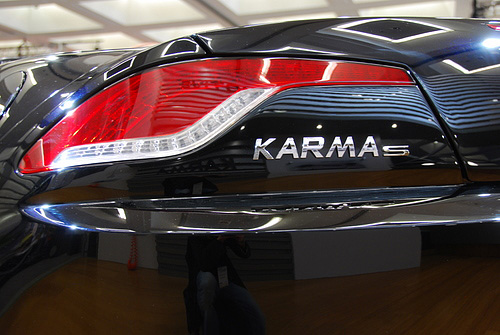
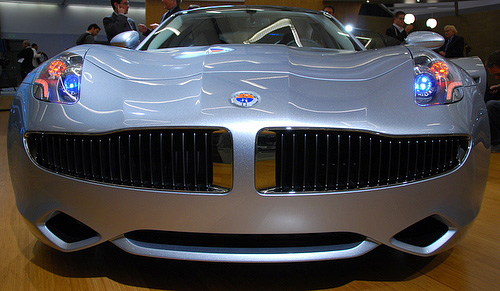



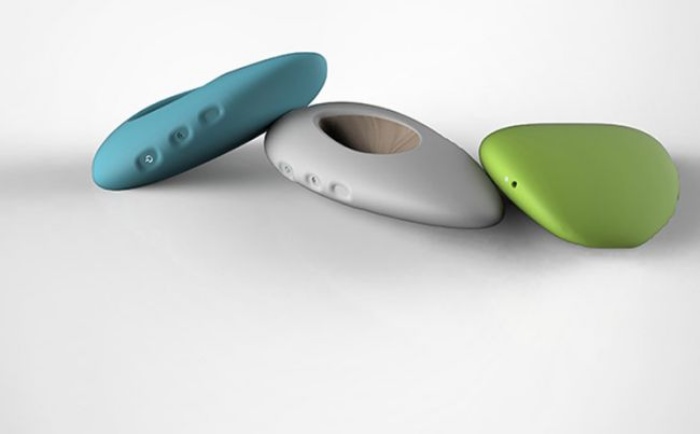
Fisher Karma is sweeeett! Now i feel bad for not being able to afford any of this. Thank you Ohgizmo 🙁
Chevy Volt is charming but the outlook is a little bit crude. I like this car anyhow. Thanks for pictures.
I'll still take the Tesla over these.
Toyota makes the Prius, Just so you know…
Wow, they do, don't they? Fixed.
The Karma looks sharp. I mean it doesn't look like a hybrid at all. It looks so hot.
Why does the convertible version cost more? They're certainly not spending the money on semi-expensive solar panels on the roof you wouldn't have. Where does the money go?
Well, they have to pay someone to come in and rip the roof off…
Men with mid life crisis are more willing to pay the extra money for a convertible because of the sex appeal associate with those cars.
Well, they have to pay someone to come in and rip the roof off…
Men with mid life crisis are more willing to pay the extra money for a convertible because of the sex appeal associate with those cars.